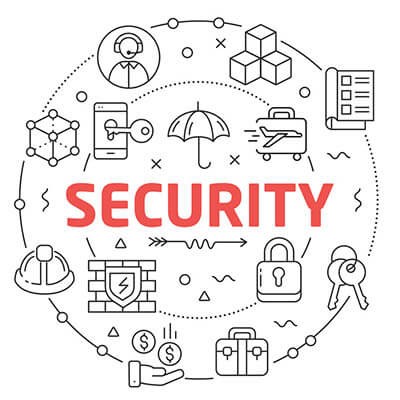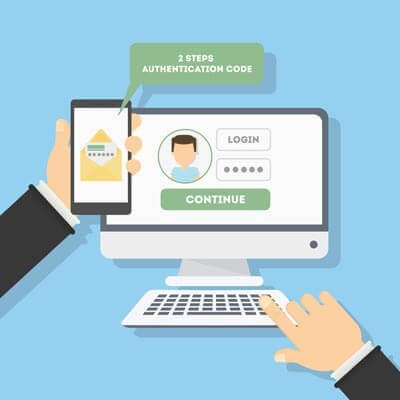InTegriLogic Blog
While 58 percent of IT leaders and practitioners consider improving IT security their topmost priority, nearly 53 percent of them find cybersecurity and data protection to be among their biggest challenges as well.2 That’s primarily because cybersecurity is not a one-and-done exercise. Your business might be safe now but could be unsafe the very next minute. Securing your business’ mission critical data requires undeterred effort sustained over a long period of time. While there are several pieces to this puzzle, the most important one, considering today’s threat landscape, is ongoing risk management.
Through the course of this blog, you will understand the definition of a cybersecurity risk assessment and why you must undertake and monitor them regularly to keep your business’ cybersecurity posture abreast with ever-evolving cyberthreats. By the end of it, we hope you realize how installing cybersecurity solutions alone isn’t enough to counter cyberattacks unless you make ongoing risk management an operational standard for your business.
Understanding Cybersecurity Risk Assessment
In rudimentary terms, a cybersecurity risk assessment refers to the act of understanding, managing, controlling and mitigating cybersecurity risks across your business’ infrastructure.In its Cybersecurity Framework (CSF), the National Institute of Standards and Technology (NIST) states that the purpose of cybersecurity risk assessments is to “identify, estimate and prioritize risk to organizational operations, assets, individuals, other organizations and the Nation, resulting from the operation and use of information systems.”
The primary purpose of a cybersecurity risk assessment is to help key decision-makers take informed decisions to tackle prevalent and imminent risks. Ideally, an assessment must answer the following questions:
- What are your business’ key IT assets?
- What type of data breach would have a major impact on your business?
- What are the relevant threats to your business and their sources?
- What are the internal and external security vulnerabilities?
- What would be the impact if any of the vulnerabilities were exploited?
- What is the probability of a vulnerability being exploited?
- What cyberattacks or security threats could impact your business’ ability to function?
The answers to these questions will help you keep track of security risks and mitigate them before disaster strikes. Now, imagine periodically having the answers to these questions whenever you sit down to make key business decisions. If you’re wondering how it would benefit you, keep reading.
Why Make Ongoing Risk Management an Operational Standard?
Making ongoing risk management an operational standard is vital, especially in today’s cyberthreat landscape where even a single threat cannot be underestimated. In one assessment, your business might seem on the right track but in the next one, certain factors would have changed exactly how business would have changed. That’s precisely why having an ongoing risk management strategy is now an integral part of standard operations for many of your peers.Here are seven reasons why you just can’t keep this key business decision on the backburner anymore:
Reason 1: Keeping Threats at Bay
Most importantly, an ongoing risk management strategy will help you keep threats at a safe distance from your business; especially ones you usually do not monitor regularly.Reason 2: Prevent Data Loss
Theft or loss of business-critical data can set your business back a long way, leading to loss of business to competitors. Ongoing risk management can help you remain vigilant of any possible attempts at compromising your business data.Reason 3: Enhanced Operational Efficiency and Reduced Workforce Frustration
As a business owner or key decision-maker of your organization, you would be amazed how consistently staying on top of potential cybersecurity threats can reduce the risk of unplanned downtime. The assurance that hard work will not vanish into thin air will surely keep the morale of your employees high, thereby reflecting positively on their productivity.Reason 4: Reduction of Long-Term Costs
Identifying potential vulnerabilities and mitigating them in time can help you prevent or reduce security incidents, which in turn would save your business a significant amount of money and/or potential reputational damage.Reason 5: One Assessment Will Set the Right Tone
You must not assume that there should only be one fixed template for all your future cybersecurity risk assessments. However, in order to update them continuously, you need to conduct one in the first place. Hence, the first few assessments will set the right tone for future assessments as part of your ongoing risk management strategy.Reason 6: Improved Organizational Knowledge
Knowing security vulnerabilities across the business will help you keep a keen eye on important aspects that your business must improve on.Reason 7: Avoid Regulatory Compliance Issues
By ensuring that you put up a formidable defense against cyberthreats, you will automatically avoid hassles with respect to complying with regulatory standards such as HIPAA, GDPR, PCI DSS, etc.Join Hands With the Right Partner
While we certainly wish we could say that you have plenty of time to mull over this, the unfortunate reality is you do not. If you snooze, it's very likely that you will lose to a nefarious cybercriminal.It’s time for you to join hands with the right partner to help you gauge every single cybersecurity risk your business is exposed to. Contact us today to find out how you can prevent cybersecurity concerns from being the biggest reason you stay up late at night.
Article curated and used by permission.
Data Sources:
- Global Cybersecurity 2020 Forecast Canalys
- 2020 State of IT Operations Survey, Kaseya
There is no question that a small business can benefit from technology, as has been proven time and time again. However, an issue can arise if a business bites off more than it can chew, so to speak, and ultimately creates a spike in costs. A responsible business owner will resist this temptation and prioritize the solutions they need over the ones they want - building profitability and generating capital needed to make other improvements.
In this blog, we’ll examine some of the implementations that can deliver a good return on investment to a small business.
The cloud has proven to be an extremely useful tool for the modern business. Not only does it provide anywhere-anytime access to applications, processing, storage, et al; it also delivers those products as a service, allowing you to budget for recurring costs rather than major upfront ones. This provides your organization with functional, supported, and secure computing environments that eliminate a lot of the support costs that traditional computing environments require. It sounds like a perfect scenario for small and large businesses alike, but things aren’t always what they seem, as a lot of cloud users have found that they have incurred several hidden costs by using cloud platforms. Today, we take a look at these hidden costs.
Data security isn’t a matter to be taken lightly, as too many businesses have found out the hard way. Unfortunately, there are far too many simple ways to correct common security issues - enough that it’s foolish not to do so. We’ll review a few ways to fix security issues, after discussing one of, if not the, most egregious security failings in modern history.
The password isn’t nearly as secure as it used to be. Hackers have begun to take advantage of extremely powerful solutions designed to brute force their way into accounts by using software to rapidly guessing thousands of passwords per second, making it extraordinarily difficult to prepare yourself for them.
What’s the best way to guarantee that passwords aren’t going to be the downfall of your company? A great start is by taking a close look at password best practices and two-factor authentication.




